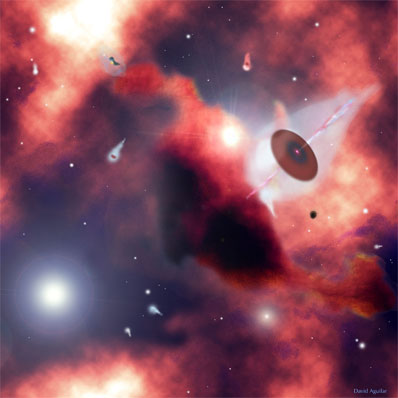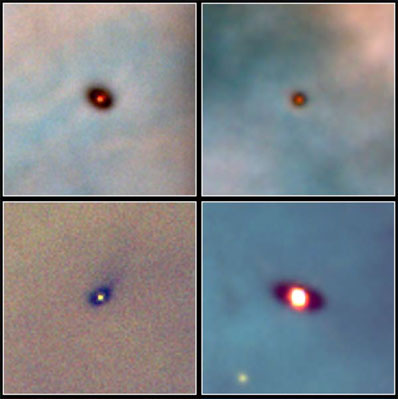
Spaceflight Now +

|

|

|

|

Premium video content for our Spaceflight Now Plus subscribers.

Supply ship docking
 The 18th Progress resupply ship launched to the International Space Station is guided to docking with the Zvezda service module's aft port via manual control from commander Sergei Krikalev. A problem thwarted plans for an automated linkup. The 18th Progress resupply ship launched to the International Space Station is guided to docking with the Zvezda service module's aft port via manual control from commander Sergei Krikalev. A problem thwarted plans for an automated linkup.

 Play video: Play video:
Short | Extended version

Shuttle collection
 As excitement builds for the first space shuttle launch in over two years, this comprehensive video selection captures the major pre-flight events for Discovery and her seven astronauts. As excitement builds for the first space shuttle launch in over two years, this comprehensive video selection captures the major pre-flight events for Discovery and her seven astronauts.
 See selection See selection

House hearing on ISS
 The House Science Committee, Subcommittee on Space and Aeronautics, begins its hearing on the International Space Station. (29min 59sec file) The House Science Committee, Subcommittee on Space and Aeronautics, begins its hearing on the International Space Station. (29min 59sec file)
 Play video Play video

Phillips testifies
 House members question Expedition 11 crew member John Phillips living on the International Space Station. (16min 33sec file) House members question Expedition 11 crew member John Phillips living on the International Space Station. (16min 33sec file)
 Play video Play video

Past ISS astronauts
 The hearing continues with questioning by House members of former station astronauts Peggy Whitson and Mike Fincke. (31min 33sec file) The hearing continues with questioning by House members of former station astronauts Peggy Whitson and Mike Fincke. (31min 33sec file)
 Play video Play video

Station update
 A status report on the Expedition 11 crew's mission aboard the International Space Station is given during this news conference Monday. (55min 54sec file) A status report on the Expedition 11 crew's mission aboard the International Space Station is given during this news conference Monday. (55min 54sec file)

 Play video: Play video:
Dial-up | Broadband

Tropical Storm Arlene
 A camera on the International Space Station captured this view of Tropical Storm Arlene moving into the Gulf of Mexico as the orbiting complex flew above the weather system at 2:33 p.m. EDT on Friday, June 10. (3min 06sec file) A camera on the International Space Station captured this view of Tropical Storm Arlene moving into the Gulf of Mexico as the orbiting complex flew above the weather system at 2:33 p.m. EDT on Friday, June 10. (3min 06sec file)
 Play video Play video

 Become a subscriber Become a subscriber
 More video More video

|

|

|

|
|

|

Protoplanetary systems found common in the galaxy
HARVARD-SMITHSONIAN CENTER FOR ASTROPHYSICS NEWS RELEASE
Posted: June 26, 2005
Astronomers using the Submillimeter Array (SMA) on Mauna Kea, Hawaii, have confirmed, for the
first time, that many of the objects termed "proplyds" found in the Orion Nebula do have sufficient material to form new planetary systems like our own.

In this artist rendering, the proplyds appear as rapidly spinning stars surrounded by a dust disk around the middle and two stellar jets extending from the poles. Nestled inside a cocoon of gas, these jets slow down the angular momentum of the spinning star so that eventually, planets may form. Artwork Credit: David Aguilar, CfA
|
"The SMA is the only telescope that can measure the dust within the Orion
proplyds, and thereby assess their true potential for forming planets. This
is critical in our understanding of how solar systems form in hostile
regions of space," said Jonathan Williams of the University of Hawaii
Institute for Astronomy, lead author on a paper submitted to The
Astrophysical Journal.
Surviving in the chaotic regions within the Orion Nebula where stellar
winds can reach a staggering two million miles per hour and temperatures
exceed a searing 18,000 degrees Fahrenheit, the question remained - would
enough material endure to form a new solar system or would it be eroded
away into space like wind and sand eroding away desert cliffs? It now
appears that these protoplanetary disks are quite tenacious, bringing new
grounds for optimism in the search for planetary systems.
Imaged by the Hubble Space Telescope back in the early 1990s as misshapen
silhouettes against the nebular background, the most spectacular proplyds
appear bright. Their surrounding ionized cocoons glow due to their close
proximity to a nearby hot star formation called the Trapezium. The
Trapezium is a star cluster consisting of more than 1,000 young, hot stars
that are only 1 million years old. They condensed out of the original
cold, dark cloud of gas that now glows from their ionizing light. They are
crowded into a space about 4 light-years in diameter, the same as the
distance between the Sun and Proxima Centauri, the next closest star in
space.

These are Hubble images of four protoplanetary disks around young stars in the Orion nebula, located 1,500 light-years away. The red glow in the center of each disk is a young, newly formed star, roughly one million years old. Each image is 167 billion miles across (30 times the diameter of our own solar system). The disks range in size from two to eight times the diameter of our solar system. Credit: M. McCaughrean (Max Planck Institute for Astronomy), C.R. O'Dell (Rice University), and NASA
|
Blasted by the solar winds of the Trapezium, the proplyds are the next
generation of smaller stars to arise in Orion, this time with visible discs
that may be forming planets. It has remained unclear, however, whether they
contained enough material to form stable planetary systems. Using the SMA,
astronomers now have been able to probe deep inside these disks to measure
their mass and to unravel the formation process presented by these
potential infant solar systems.
"While the Hubble pictures were spectacular, they revealed only disk-like
shapes that did not tell us the amount of material present," said David
Wilner, of the Harvard-Smithsonian Center for Astrophysics (CfA). Since
some of the discs appear to be comparable in size and mass to our own solar
system, this strengthens the connection between the Orion proplyds and our
origins.
Since most Sun-like stars in the Galaxy eventually form in environments
like the Orion Nebula, the SMA results suggest that the formation of solar
systems like our own is common and a continuing event in the Galaxy.
"The same cycle of birth, life and death we experience here on Earth is
repeated in the stars overhead. Now, the SMA provides us with a front-row
seat in unraveling the wonder of these cosmic events," reflected Wilner.
Headquartered in Cambridge, Mass., the Harvard-Smithsonian Center for
Astrophysics (CfA) is a joint collaboration between the Smithsonian
Astrophysical Observatory and the Harvard College Observatory. CfA
scientists, organized into six research divisions, study the origin,
evolution and ultimate fate of the universe.
|

|

|

|


|



